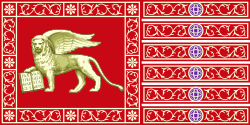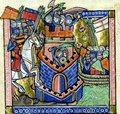р┤▒р┤┐р┤кр╡Нр┤кр┤мр╡Нр┤▓р┤┐р┤Хр╡Нр┤Хр╡Н р┤Ур┤лр╡Н р┤╡р╡Жр┤ир╡Ар┤╕р╡Н
р┤Ор┤Яр╡Нр┤Яр┤╛р┤В р┤ир╡Вр┤▒р╡Нр┤▒р┤╛р┤гр╡Нр┤Яр┤┐р┤ир╡Бр┤В р┤кр┤др┤┐р┤ир╡Жр┤Яр╡Нр┤Яр┤╛р┤В р┤ир╡Вр┤▒р╡Нр┤▒р┤╛р┤гр╡Нр┤Яр┤┐р┤ир╡Бр┤В р┤Зр┤Яр┤пр╡Нр┤Хр╡Нр┤Хр╡Н р┤ир┤┐р┤▓р┤ир┤┐р┤ир╡Нр┤ир┤┐р┤░р╡Бр┤ир╡Нр┤и р┤╡р┤Яр┤Хр╡Нр┤Хр╡Бр┤Хр┤┐р┤┤р┤Хр╡Нр┤Хр╡╗ р┤Зр┤▒р╡Нр┤▒р┤▓р┤┐р┤пр┤┐р┤▓р╡Ж р┤Тр┤░р╡Б р┤кр┤░р┤ор┤╛р┤зр┤┐р┤Хр┤╛р┤░ р┤░р┤╛р┤╖р╡Нр┤Яр╡Нр┤░р┤╡р╡Бр┤В р┤нр┤░р┤гр┤Хр╡Вр┤Яр┤╡р╡Бр┤ор┤╛р┤пр┤┐р┤░р╡Бр┤ир╡Нр┤ир╡Б р┤▒р┤┐р┤кр╡Нр┤кр┤мр╡Нр┤▓р┤┐р┤Хр╡Нр┤Хр╡Н р┤Ур┤лр╡Н р┤╡р╡Жр┤ир╡Ар┤╕р╡Н (р┤Зр┤▒р╡Нр┤▒р┤╛р┤▓р┤┐р┤пр╡╗: Repubblica di Venezia, р┤кр┤┐р┤ир╡Нр┤ир╡Ар┤Яр╡Н: Repubblica Veneta; р┤╡р╡Жр┤ир╡Ар┤╖р╡Нр┤пр╡╗: Rep├║blica de Ven├иcia, р┤кр┤┐р┤ир╡Нр┤ир╡Ар┤Яр╡Н: Rep├║blica Vene) р┤кр┤░р┤ор╡Нр┤кр┤░р┤╛р┤Чр┤др┤ор┤╛р┤пр┤┐ р┤▓р┤╛ р┤╕р╡Жр┤░р╡Жр┤ир┤┐р┤╖р┤┐р┤о р┤Ор┤ир╡Нр┤ир╡Н р┤Ер┤▒р┤┐р┤пр┤кр╡Нр┤кр╡Жр┤Яр╡Бр┤ир╡Нр┤ир╡Б.(English: Most Serene Republic of Venice) (Italian: Serenissima Repubblica di Venezia; Venetian: Seren├мsima Rep├╣blica V├иneta) р┤▓р┤Чр╡Вр╡║ р┤╕р┤ор╡Вр┤╣р┤др╡Нр┤др╡Ж р┤Ер┤Яр┤┐р┤╕р╡Нр┤ер┤╛р┤ир┤ор┤╛р┤Хр╡Нр┤Хр┤┐ р┤╡р╡Жр┤ир┤┐р┤╕р╡Н р┤ир┤Чр┤░р┤В р┤Ър┤░р┤┐р┤др╡Нр┤░р┤кр┤░р┤ор┤╛р┤пр┤┐ р┤╕р┤ор╡Нр┤кр┤ир╡Нр┤и р┤ир┤Чр┤░р┤ор┤╛р┤Хр╡Бр┤Хр┤пр╡Бр┤В р┤ор┤зр╡Нр┤пр┤Хр┤╛р┤▓р┤Шр┤Яр╡Нр┤Яр┤Щр╡Нр┤Щр┤│р┤┐р┤▓р╡Жр┤пр╡Бр┤В р┤ир┤╡р╡Лр┤др╡Нр┤ер┤╛р┤и р┤Хр┤╛р┤▓р┤др╡Нр┤др┤┐р┤▓р╡Жр┤пр╡Бр┤В р┤кр╡Нр┤░р┤ор╡Бр┤Ц р┤пр╡Вр┤▒р╡Лр┤кр╡Нр┤пр╡╗ р┤╕р┤╛р┤ор╡Нр┤кр┤др╡Нр┤др┤┐р┤Х, р┤╡р╡Нр┤пр┤╛р┤кр┤╛р┤░ р┤╢р┤Хр╡Нр┤др┤┐р┤пр┤╛р┤пр┤┐ р┤ор┤╛р┤▒р╡Бр┤Хр┤пр╡Бр┤В р┤Ър╡Жр┤пр╡Нр┤др╡Б. р┤▒р╡Лр┤ор╡╗ р┤╕р┤╛р┤ор╡Нр┤░р┤╛р┤Ьр╡Нр┤пр┤др╡Нр┤др┤┐р┤ир╡Нр┤▒р╡Ж р┤кр┤др┤ир┤др╡Нр┤др┤┐р┤ир╡Б р┤╢р╡Зр┤╖р┤В р┤пр╡Вр┤▒р╡Лр┤кр╡Нр┤пр╡╗ р┤нр╡Вр┤Цр┤гр╡Нр┤бр┤др╡Нр┤др┤┐р╡╜ р┤кр╡Ар┤бр┤ир┤др╡Нр┤др┤┐р┤ир╡Н р┤╡р┤┐р┤зр╡Зр┤пр┤░р┤╛р┤п р┤Ьр┤ир┤Щр╡Нр┤Щр╡╛р┤Хр╡Нр┤Хр╡Н р┤╕р╡Бр┤░р┤Хр╡Нр┤╖р┤┐р┤др┤ор┤╛р┤п р┤Тр┤░р╡Б р┤др╡Бр┤▒р┤ор╡Бр┤Цр┤ор┤╛р┤пр┤┐р┤Яр╡Нр┤Яр┤╛р┤гр╡Н р┤╡р╡Жр┤ир╡Ар┤╕р┤┐р┤▓р╡Ж р┤ир┤Чр┤░ р┤░р┤╛р┤╖р╡Нр┤Яр╡Нр┤░р┤Щр╡Нр┤Щр╡╛ р┤░р╡Вр┤кр╡Ар┤Хр┤░р┤┐р┤Хр╡Нр┤Хр┤кр╡Нр┤кр╡Жр┤Яр╡Нр┤Яр┤др╡Н. р┤Жр┤жр╡Нр┤пр┤Хр┤╛р┤▓р┤Щр╡Нр┤Щр┤│р┤┐р╡╜ р┤Зр┤╡р┤┐р┤Яр╡Ж р┤Йр┤кр╡Нр┤кр╡Бр┤╡р╡Нр┤пр┤╛р┤кр┤╛р┤░р┤ор┤╛р┤пр┤┐р┤░р╡Бр┤ир╡Нр┤ир╡Б (р┤╕р┤╛р╡╛р┤Яр╡Нр┤Яр╡Н р┤▒р╡Лр┤бр╡Н) р┤ир┤Яр┤ир╡Нр┤ир┤┐р┤░р╡Бр┤ир╡Нр┤ир┤др╡Н. р┤др╡Бр┤Яр╡╝р┤ир╡Нр┤ир╡Бр┤│р╡Нр┤│ р┤ир╡Вр┤▒р╡Нр┤▒р┤╛р┤гр╡Нр┤Яр╡Бр┤Хр┤│р┤┐р╡╜ р┤ир┤Чр┤░ р┤╕р┤Вр┤╕р╡Нр┤ер┤╛р┤ир┤В р┤др┤▓р┤╕р╡Лр┤Хр╡Нр┤░р┤╕р┤┐ р┤╕р╡Нр┤ер┤╛р┤кр┤┐р┤Ър╡Нр┤Ър╡Б. р┤пр╡Вр┤▒р╡Лр┤кр╡Нр┤кр╡Бр┤В р┤╡р┤Яр┤Хр╡Нр┤Хр╡З р┤Жр┤лр╡Нр┤░р┤┐р┤Хр╡Нр┤Хр┤пр╡Бр┤В р┤Пр┤╖р╡Нр┤пр┤пр╡Бр┤В р┤др┤ор╡Нр┤ор┤┐р┤▓р╡Бр┤│р╡Нр┤│ р┤╡р┤╛р┤гр┤┐р┤Ьр╡Нр┤пр┤В р┤Йр╡╛р┤кр╡Нр┤кр╡Жр┤Яр╡Ж р┤ор╡Жр┤бр┤┐р┤▒р╡Нр┤▒р┤▒р╡Зр┤ир┤┐р┤пр╡╗ р┤Хр┤Яр┤▓р┤┐р┤▓р╡Ж р┤╡р╡Нр┤пр┤╛р┤кр┤╛р┤░р┤др╡Нр┤др┤┐р╡╜ р┤Ер┤др╡Н р┤Жр┤зр┤┐р┤кр┤др╡Нр┤пр┤В р┤кр╡Бр┤▓р╡╝р┤др╡Нр┤др┤┐. р┤╡р╡Жр┤ир╡Ар┤╖р╡Нр┤пр╡╗ р┤ир┤╛р┤╡р┤┐р┤Хр┤╕р╡Зр┤ир┤пр╡Ж р┤Хр╡Бр┤░р┤┐р┤╢р╡Бр┤пр╡Бр┤жр╡Нр┤зр┤др╡Нр┤др┤┐р╡╜ р┤Йр┤кр┤пр╡Лр┤Чр┤┐р┤Ър╡Нр┤Ър┤┐р┤░р╡Бр┤ир╡Нр┤ир╡Б, р┤кр╡Нр┤░р┤др╡Нр┤пр╡Зр┤Хр┤┐р┤Ър╡Нр┤Ър╡Н р┤ир┤╛р┤▓р┤╛р┤ор┤др╡Нр┤др╡Ж р┤Хр╡Бр┤░р┤┐р┤╢р╡Бр┤пр╡Бр┤жр╡Нр┤зр┤др╡Нр┤др┤┐р╡╜. р┤╡р╡Жр┤ир╡Ар┤╕р╡Н р┤Ер┤бр╡Нр┤░р┤┐р┤пр┤╛р┤▒р╡Нр┤▒р┤┐р┤Хр╡Н р┤Хр┤Яр┤▓р┤┐р┤ир┤Яр╡Бр┤др╡Нр┤др╡Бр┤│р╡Нр┤│ р┤кр╡Нр┤░р┤жр╡Зр┤╢р┤Щр╡Нр┤Щр╡╛ р┤Хр╡Ар┤┤р┤Яр┤Хр╡Нр┤Хр┤┐. р┤ир┤Чр┤░р┤др╡Нр┤др┤┐р┤▓р╡Ж р┤▓р┤Чр╡Вр╡║ р┤др┤Яр┤╛р┤Хр┤Щр╡Нр┤Щр┤│р┤┐р╡╜ р┤кр╡Нр┤░р┤╢р┤╕р╡Нр┤др┤ор┤╛р┤п р┤Хр┤▓р┤пр╡Жр┤пр╡Бр┤В р┤╡р┤╛р┤╕р╡Нр┤др╡Бр┤╡р┤┐р┤жр╡Нр┤пр┤пр╡Жр┤пр╡Бр┤В р┤╕р┤Вр┤░р┤Хр╡Нр┤╖р┤┐р┤Ър╡Нр┤Ъ р┤╡р╡Жр┤ир╡Ар┤╕р╡Н р┤╡р┤│р┤░р╡Ж р┤╕р┤ор╡Нр┤кр┤ир╡Нр┤ир┤ор┤╛р┤п р┤Тр┤░р╡Б р┤╡р╡Нр┤пр┤╛р┤кр┤╛р┤░ р┤╡р┤┐р┤нр┤╛р┤Чр┤др╡Нр┤др┤┐р┤ир╡Нр┤▒р╡Ж р┤нр┤╡р┤ир┤ор┤╛р┤пр┤┐ р┤ор┤╛р┤▒р┤┐. р┤╡р╡Жр┤ир╡Ар┤╖р╡Нр┤пр╡╗ р┤╡р╡Нр┤пр┤╛р┤кр┤╛р┤░р┤┐р┤Хр╡╛ р┤пр╡Вр┤▒р╡Лр┤кр╡Нр┤кр┤┐р┤▓р╡Ж р┤╕р╡Нр┤╡р┤╛р┤зр╡Ар┤ир┤ор╡Бр┤│р╡Нр┤│ р┤зр┤ир┤Хр┤╛р┤░р╡Нр┤п р┤╕р╡Нр┤ер┤╛р┤кр┤ир┤Щр╡Нр┤Щр┤│р┤╛р┤пр┤┐р┤░р╡Бр┤ир╡Нр┤ир╡Б. р┤ор┤╛р╡╝р┤Хр╡Нр┤Хр╡Л р┤кр╡Лр┤│р╡Л р┤кр╡Лр┤▓р╡Бр┤│р╡Нр┤│ р┤ор┤┐р┤Хр┤Ър╡Нр┤Ъ р┤пр╡Вр┤▒р╡Лр┤кр╡Нр┤пр╡╗ р┤кр┤░р╡Нр┤пр┤╡р╡Зр┤Хр╡Нр┤╖р┤Хр┤░р╡Бр┤Яр╡Жр┤пр╡Бр┤В р┤мр┤▒р╡Лр┤Хр╡Нр┤Хр╡Н р┤╕р┤Вр┤Чр╡Ар┤др┤Ьр╡Нр┤Юр┤░р┤╛р┤п р┤╡р┤┐р┤╡р┤╛р╡╛р┤бр┤┐, р┤мр╡Жр┤ир╡Жр┤бр╡Жр┤▒р╡Нр┤▒р╡Л р┤ор┤╛р╡╝р┤╕р╡Жр┤▓р╡Нр┤▓р╡Л р┤Ор┤ир╡Нр┤ир┤┐р┤╡р┤░р╡Бр┤Яр╡Жр┤пр╡Бр┤В р┤Ьр┤ир╡Нр┤ор┤╕р╡Нр┤ер┤▓р┤В р┤Хр╡Вр┤Яр┤┐р┤пр┤╛р┤пр┤┐р┤░р╡Бр┤ир╡Нр┤ир╡Б р┤И р┤ир┤Чр┤░р┤В. р┤╕р┤┐р┤▒р╡Нр┤▒р┤┐-р┤╕р╡Нр┤▒р╡Нр┤▒р╡Зр┤▒р╡Нр┤▒р╡Н р┤кр┤╛р╡╝р┤▓р┤ор╡Жр┤ир╡Нр┤▒р┤╛р┤п р┤Чр╡Нр┤░р╡Зр┤▒р╡Нр┤▒р╡Н р┤Хр╡Чр╡║р┤╕р┤┐р╡╜ р┤Ур┤лр╡Н р┤╡р╡Жр┤ир╡Ар┤╕р┤┐р┤▓р╡Ж р┤Ер┤Вр┤Чр┤Щр╡Нр┤Щр╡╛ р┤▒р┤┐р┤кр╡Нр┤кр┤мр╡Нр┤▓р┤┐р┤Хр╡Нр┤Хр┤┐р┤ир╡Ж р┤нр┤░р┤┐р┤Ър╡Нр┤Ър┤┐р┤░р╡Бр┤ир╡Нр┤и р┤бр╡Лр┤Чр╡Н р┤др┤┐р┤░р┤Юр╡Нр┤Юр╡Жр┤Яр╡Бр┤др╡Нр┤др╡Б. р┤╡р╡Нр┤пр┤╛р┤кр┤╛р┤░р┤┐р┤Хр┤│р╡Бр┤Яр╡Жр┤пр╡Бр┤В р┤кр╡Нр┤░р┤нр╡Бр┤Хр╡Нр┤Хр┤ир╡Нр┤ор┤╛р┤░р╡Бр┤Яр╡Жр┤пр╡Бр┤В р┤Тр┤░р╡Б р┤кр╡Нр┤░р┤нр╡Бр┤╡р╡╝р┤Чр╡Нр┤Чр┤ор┤╛р┤пр┤┐р┤░р╡Бр┤ир╡Нр┤ир╡Б р┤нр┤░р┤гр┤╡р╡╝р┤Чр┤В. р┤ор╡Бр┤др┤▓р┤╛р┤│р┤┐р┤др╡Нр┤др┤др╡Нр┤др╡Ж р┤╡р┤│р╡╝р┤др╡Нр┤др┤┐р┤пр╡Жр┤Яр╡Бр┤Хр╡Нр┤Хр╡Бр┤ир╡Нр┤ир┤др┤┐р╡╜ р┤╡р╡Жр┤ир╡Ар┤╕р╡Бр┤В р┤ор┤▒р╡Нр┤▒р╡Н р┤Зр┤▒р╡Нр┤▒р┤╛р┤▓р┤┐р┤пр╡╗ р┤╕р┤ор╡Бр┤жр╡Нр┤░ р┤▒р┤┐р┤кр╡Нр┤кр┤мр╡Нр┤▓р┤┐р┤Хр╡Нр┤Хр╡Бр┤Хр┤│р╡Бр┤В р┤кр╡Нр┤░р┤зр┤╛р┤и р┤кр┤Щр╡Нр┤Хр╡Н р┤╡р┤╣р┤┐р┤Ър╡Нр┤Ър╡Б. р┤╡р╡Жр┤ир╡Ар┤╖р╡Нр┤пр╡╗ р┤кр╡Чр┤░р┤ир╡Нр┤ор┤╛р╡╝ р┤кр╡Кр┤др╡Бр┤╡р╡Ж р┤нр┤░р┤гр┤╡р╡Нр┤пр┤╡р┤╕р╡Нр┤ер┤пр╡Ж р┤кр┤┐р┤ир╡Нр┤др╡Бр┤гр┤Ър╡Нр┤Ър┤┐р┤░р╡Бр┤ир╡Нр┤ир╡Б. р┤ир┤Чр┤░-р┤╕р┤Вр┤╕р╡Нр┤ер┤╛р┤ир┤В р┤Хр╡╝р┤╢р┤и р┤ир┤┐р┤пр┤ор┤Щр╡Нр┤Щр╡╛ р┤ир┤Яр┤кр╡Нр┤кр┤╛р┤Хр╡Нр┤Хр╡Бр┤Хр┤пр╡Бр┤В р┤Ер┤др┤┐р┤ир╡Нр┤▒р╡Ж р┤Ьр┤пр┤┐р┤▓р╡Бр┤Хр┤│р┤┐р╡╜ р┤ир┤┐р┤╖р╡НтАМр┤Хр┤░р╡Бр┤гр┤В р┤╕р╡Ир┤ир╡Нр┤пр┤╡р┤┐р┤ир╡Нр┤пр┤╛р┤╕р┤др┤ир╡Нр┤др╡Нр┤░р┤Щр╡Нр┤Щр╡╛ р┤кр╡Нр┤░р┤пр╡Лр┤Чр┤┐р┤Хр╡Нр┤Хр╡Бр┤Хр┤пр╡Бр┤В р┤Ър╡Жр┤пр╡Нр┤др╡Б. р┤Ер┤▒р╡Нр┤▒р╡Нр┤▓р┤╛р┤ир╡Нр┤▒р┤┐р┤Хр╡Н р┤╕р┤ор╡Бр┤жр╡Нр┤░р┤В р┤╡р┤┤р┤┐ р┤Ер┤ор╡Зр┤░р┤┐р┤Хр╡Нр┤Хр┤пр┤┐р┤▓р╡Зр┤Хр╡Нр┤Хр╡Бр┤В р┤Ир┤╕р╡Нр┤▒р╡Нр┤▒р╡Н р┤Зр╡╗р┤бр╡Ар┤╕р┤┐р┤▓р╡Зр┤Хр╡Нр┤Хр╡Бр┤В р┤кр╡Бр┤др┤┐р┤п р┤╡р╡Нр┤пр┤╛р┤кр┤╛р┤░ р┤▒р╡Вр┤Яр╡Нр┤Яр╡Бр┤Хр╡╛ р┤др╡Бр┤▒р┤ир╡Нр┤ир┤др╡Н р┤╡р╡Жр┤ир╡Ар┤╕р┤┐р┤▓р╡Ж р┤╢р┤Хр╡Нр┤др┤ор┤╛р┤п р┤╕р┤ор╡Бр┤жр╡Нр┤░ р┤▒р┤┐р┤кр╡Нр┤кр┤мр╡Нр┤▓р┤┐р┤Хр╡Нр┤Хр┤┐р┤ир╡Нр┤▒р╡Ж р┤др┤Хр╡╝р┤Ър╡Нр┤Ър┤пр╡Бр┤Яр╡Ж р┤др╡Бр┤Яр┤Хр╡Нр┤Хр┤ор┤╛р┤пр┤┐. р┤Ур┤Яр╡Нр┤Яр╡Лр┤ор╡╗ р┤╕р┤╛р┤ор╡Нр┤░р┤╛р┤Ьр╡Нр┤пр┤др╡Нр┤др┤┐р┤ир╡Нр┤▒р╡Ж р┤ир┤╛р┤╡р┤┐р┤Хр┤╕р╡Зр┤ир┤пр╡Бр┤Яр╡Ж р┤ор╡Бр┤ор╡Нр┤кр┤┐р╡╜ р┤ир┤Чр┤░ р┤╕р┤Вр┤╕р╡Нр┤ер┤╛р┤ир┤В р┤кр┤░р┤╛р┤Ьр┤пр┤кр╡Нр┤кр╡Жр┤Яр╡Бр┤Хр┤пр╡Бр┤В. р┤ир╡Жр┤кр╡Нр┤кр╡Лр┤│р┤┐р┤пр╡╗ р┤мр╡Лр┤гр┤кр┤╛р╡╝р┤Яр╡Нр┤Яр╡Жр┤пр╡Бр┤Яр╡Ж р┤Жр┤Хр╡Нр┤░р┤ор┤гр┤др╡Нр┤др╡Жр┤др╡Нр┤др╡Бр┤Яр╡╝р┤ир╡Нр┤ир╡Н р┤лр╡Нр┤░р┤Юр╡Нр┤Ър╡Н р┤╕р╡Ир┤ир╡Нр┤пр┤В 1797-р╡╜ р┤Ур┤╕р╡Нр┤Яр╡Нр┤░р┤┐р┤пр┤ир╡Ж р┤кр┤┐р╡╗р┤╡р┤╛р┤Щр╡Нр┤Щр┤┐ р┤▒р┤┐р┤кр╡Нр┤кр┤мр╡Нр┤▓р┤┐р┤Хр╡Н р┤Хр╡Кр┤│р╡Нр┤│р┤пр┤Яр┤┐р┤Ър╡Нр┤Ър╡Б. р┤╡р╡Жр┤ир╡Ар┤╕р╡Н р┤▒р┤┐р┤кр╡Нр┤кр┤мр╡Нр┤▓р┤┐р┤Хр╡Нр┤Хр╡Н р┤Ур┤╕р╡Нр┤Яр╡Нр┤░р┤┐р┤пр╡╗ р┤╡р╡Жр┤ир╡Ар┤╖р╡Нр┤пр╡╗ р┤кр╡Нр┤░р┤╡р┤┐р┤╢р╡Нр┤п, р┤╕р┤┐р┤╕р┤╛р╡╜р┤кр╡Ир╡╗ р┤▒р┤┐р┤кр╡Нр┤кр┤мр╡Нр┤▓р┤┐р┤Хр╡Н, р┤Тр┤░р╡Б р┤лр╡Нр┤░р┤Юр╡Нр┤Ър╡Н р┤Хр╡Нр┤▓р┤пр┤ир╡Нр┤▒р╡Н р┤╕р╡Нр┤▒р╡Нр┤▒р╡Зр┤▒р╡Нр┤▒р╡Н, р┤ж р┤▓р╡Лр┤гр┤┐р┤пр╡╗ р┤лр╡Нр┤░р┤Юр╡Нр┤Ър╡Б р┤бр┤┐р┤кр╡Нр┤кр┤╛р╡╝р┤Яр╡Нр┤Яр╡Нр┤ор╡Жр┤ир╡Нр┤▒р╡Н р┤Ур┤лр╡Н р┤Чр╡Нр┤░р╡Ар┤╕р╡Н р┤Ор┤ир╡Нр┤ир┤┐р┤Щр╡Нр┤Щр┤ир╡Ж р┤╡р┤┐р┤нр┤Ьр┤┐р┤Хр╡Нр┤Хр┤кр╡Нр┤кр╡Жр┤Яр╡Нр┤Яр╡Б. р┤кр┤др╡Нр┤др╡Кр╡╗р┤кр┤др┤╛р┤В р┤ир╡Вр┤▒р╡Нр┤▒р┤╛р┤гр╡Нр┤Яр┤┐р╡╜ р┤╡р╡Жр┤ир╡Ар┤╕р╡Н р┤Тр┤░р╡Б р┤Пр┤Хр╡Ар┤Хр╡Гр┤д р┤Зр┤▒р╡Нр┤▒р┤▓р┤┐р┤пр╡Бр┤Яр╡Ж р┤нр┤╛р┤Чр┤ор┤╛р┤пр┤┐. р┤Ър┤┐р┤др╡Нр┤░р┤╢р┤╛р┤▓
р┤Зр┤др╡Бр┤В р┤Хр┤╛р┤гр╡Бр┤Х
р┤Ер┤╡р┤▓р┤Вр┤мр┤Вр┤Хр╡Бр┤▒р┤┐р┤кр╡Нр┤кр╡Бр┤Хр╡╛р┤мр┤┐р┤мр╡Нр┤▓р┤┐р┤пр╡Лр┤Чр╡Нр┤░р┤╛р┤лр┤┐р┤кр╡Нр┤░р┤╛р┤ер┤ор┤┐р┤Х р┤Йр┤▒р┤╡р┤┐р┤Яр┤В
р┤╕р╡Жр┤Хр╡Нр┤Хр┤гр╡Нр┤Яр┤▒р┤┐ р┤Йр┤▒р┤╡р┤┐р┤Яр┤Щр╡Нр┤Щр╡╛
р┤мр┤╛р┤╣р╡Нр┤п р┤▓р┤┐р┤Щр╡Нр┤Хр╡Бр┤Хр╡╛Republic of Venice р┤Ор┤ир╡Нр┤и р┤╡р┤┐р┤╖р┤пр┤╡р╡Бр┤ор┤╛р┤пр┤┐ р┤мр┤ир╡Нр┤зр┤кр╡Нр┤кр╡Жр┤Яр╡Нр┤Я р┤Ър┤┐р┤др╡Нр┤░р┤Щр╡Нр┤Щр╡╛ р┤╡р┤┐р┤Хр╡Нр┤Хр┤┐р┤ор╡Ар┤бр┤┐р┤п р┤Хр╡Лр┤ор╡║р┤╕р┤┐р┤▓р╡Бр┤гр╡Нр┤Яр╡Н. |
||||||||||||||||||||||||||||||||||||||||||||||||||||||||||||||||
Portal di Ensiklopedia Dunia



























